Mammoth Mammals #1 The African Wild Dog…
images by Gavin Lautenbach and Alastair Kilpin
text by Gareth Hardres-Williams
3rd February 2018
It is early morning in the Linyanti Wildlife Reserve bordering the western edge of the Chobe National Park in Botswana. A flurry of impala alarm calls, followed almost immediately by a muffled gurgle, alerts our guide to some activity nearby. Soon a high-pitched yelping fills the air. To the novice game viewer on the vehicle, the resultant excitement from both myself and the guide may have seemed exaggerated, but we both knew immediately what was up. Even with years of experience guiding in the area under his belt, the determination in our guide’s subsequent driving to seek out the source of the yelps was a clear indication that we were on the tail of something special. These high-pitched calls were the characteristic sounds of the African Wild Dog having once again made a kill. Africa’s most successful predator had struck and we were soon in the most privileged position of being able to watch these fascinating animals devour their prey. The feeding is frenzied and energetic to say the least, and in no time at all the pack of 12 dogs had polished off the young impala, with small clusters of dogs now grappling over the remaining scraps. As quickly as it began, it is over. The dogs greet each other, groom a little and trot off to find some shade. An increasingly rare sight in the African bush is finished – until next time that is…
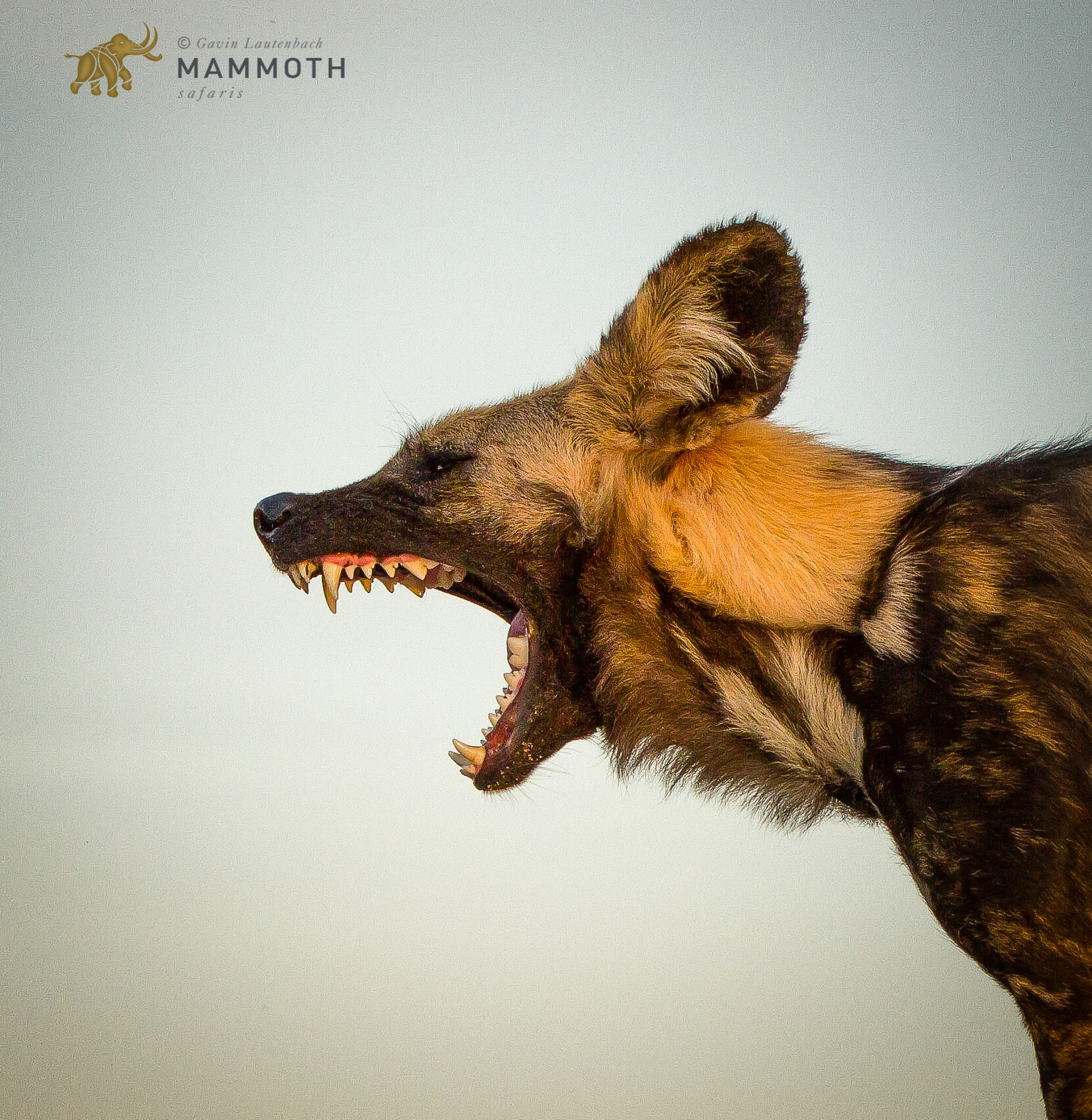
All the better to eat very quickly with…
The African Wild Dog (Lycaon pictus) has teeth that are very well adapted to devouring its prey quickly and efficiently. They have proportionately large premolars, the largest relative to body size of any carnivore other than hyenas, allowing for effective tearing of the flesh and crushing of cartilage and softer bones. Their lower carnassial teeth have a single blade-like cusp, enhancing the teeth’s shearing capacity and ensuring that prey can be eaten quickly.
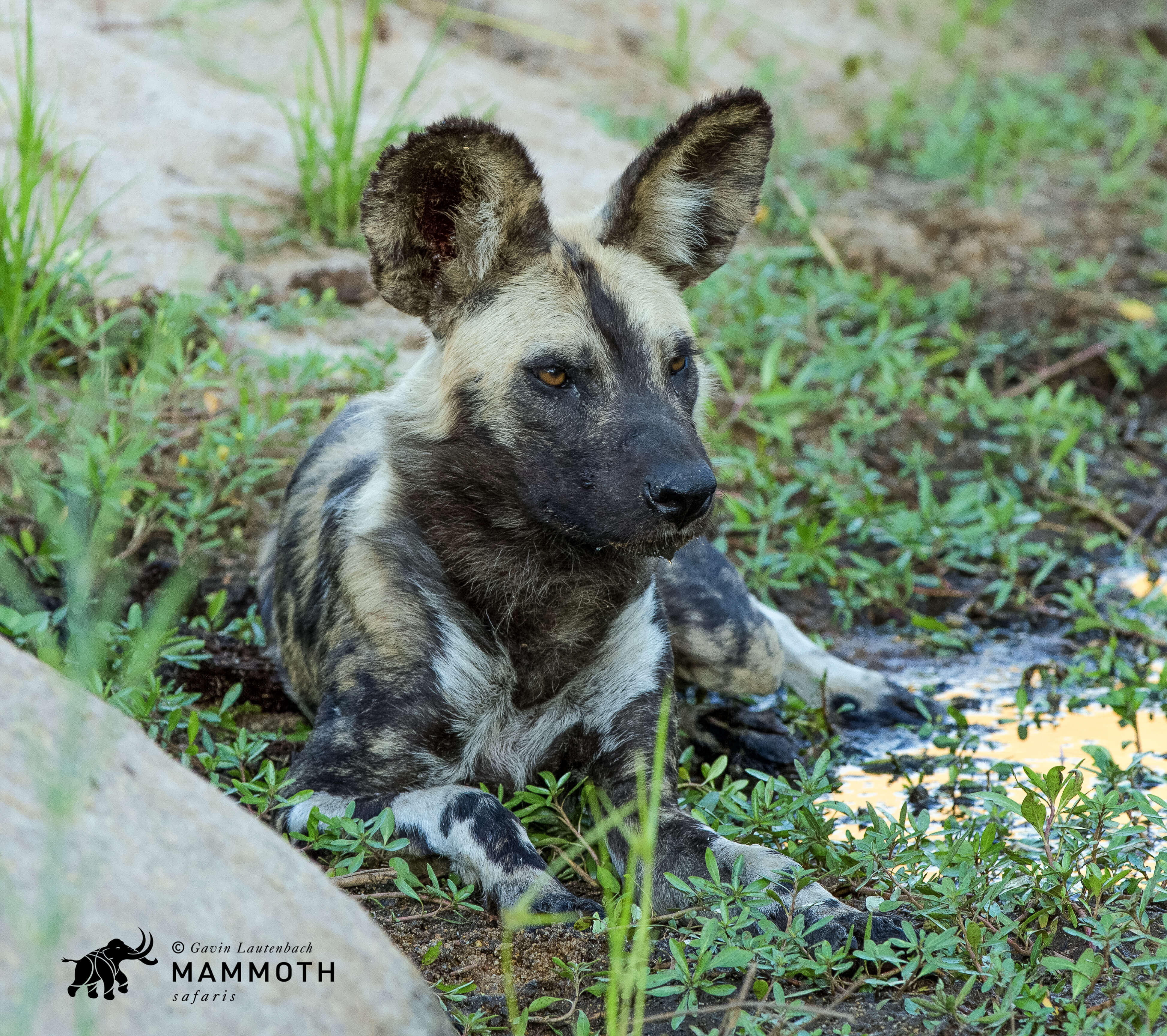
All the better to hear you with…
Unsurprisingly, given their distinctively large ears, the African Wild Dog has exceptional hearing. This sense of hearing is of benefit both for their hunting efficacy but is also key in the social dynamics of the pack. A very social animal, the African Wild Dog communicates to other members of the pack through a variety of noises, including yelps, growls as well as an instructive “sneeze” that has been noted to rally the pack to begin hunting when vocalised by a dominant dog.
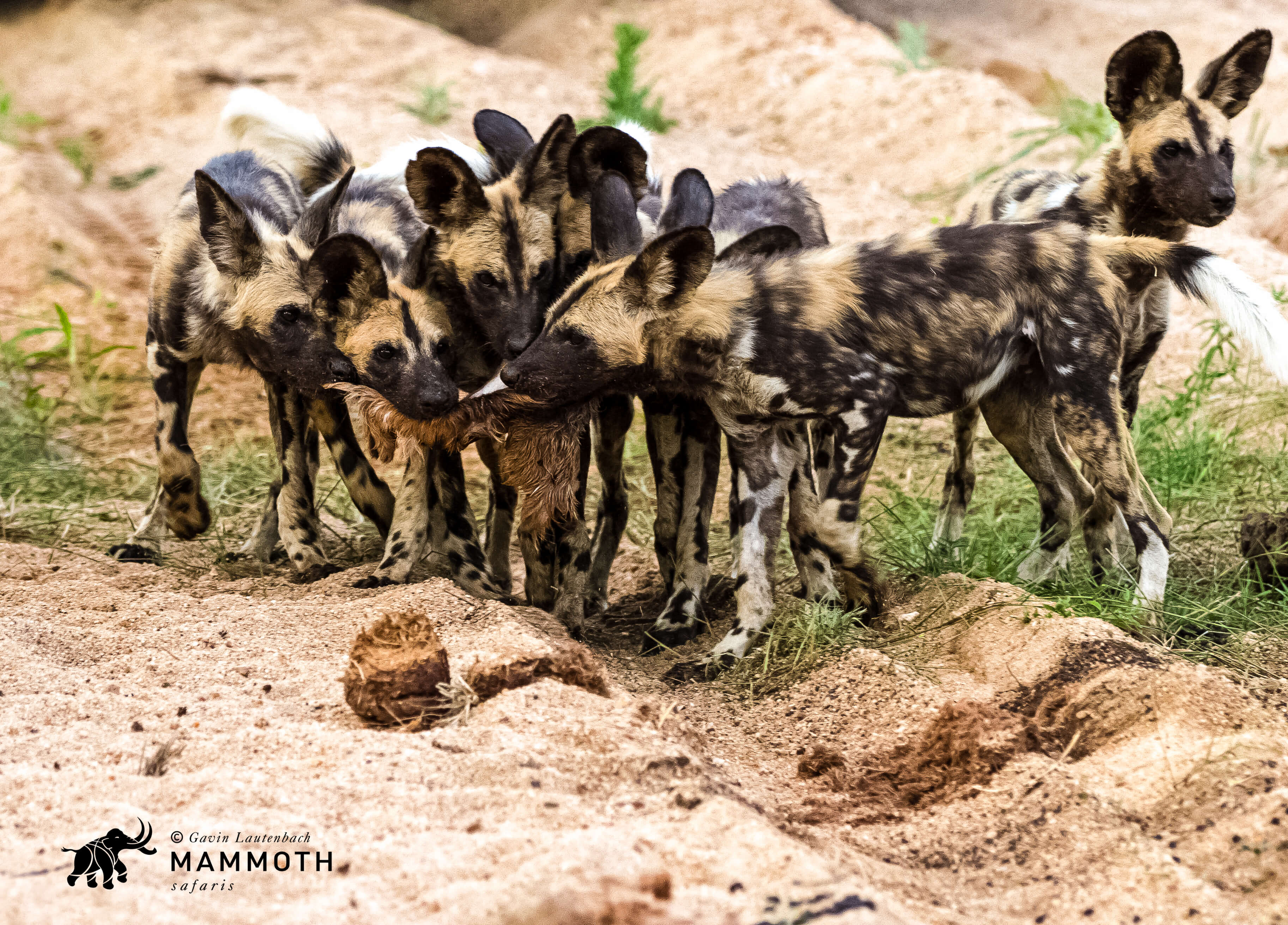
Packing it in… The African Wild Dog is a highly social animal
The pack is typically lead by a dominant pair, referred to the alpha male and the alpha female, who are the decision-makers and are also responsible for birthing the next generation. Pack sizes vary from region to region and are largely dependant on available food and the concentrations of other predators. Threats to the dogs also include increased pressure from human encroachment on their traditionally large traversing areas. Contact with domestic dogs and associated disease also threaten wild dog populations and can reduce pack sizes. Irrespective of the size of the pack – be it 5 or 25, one should consider a sighting of these fascinating mammals a rare treat.
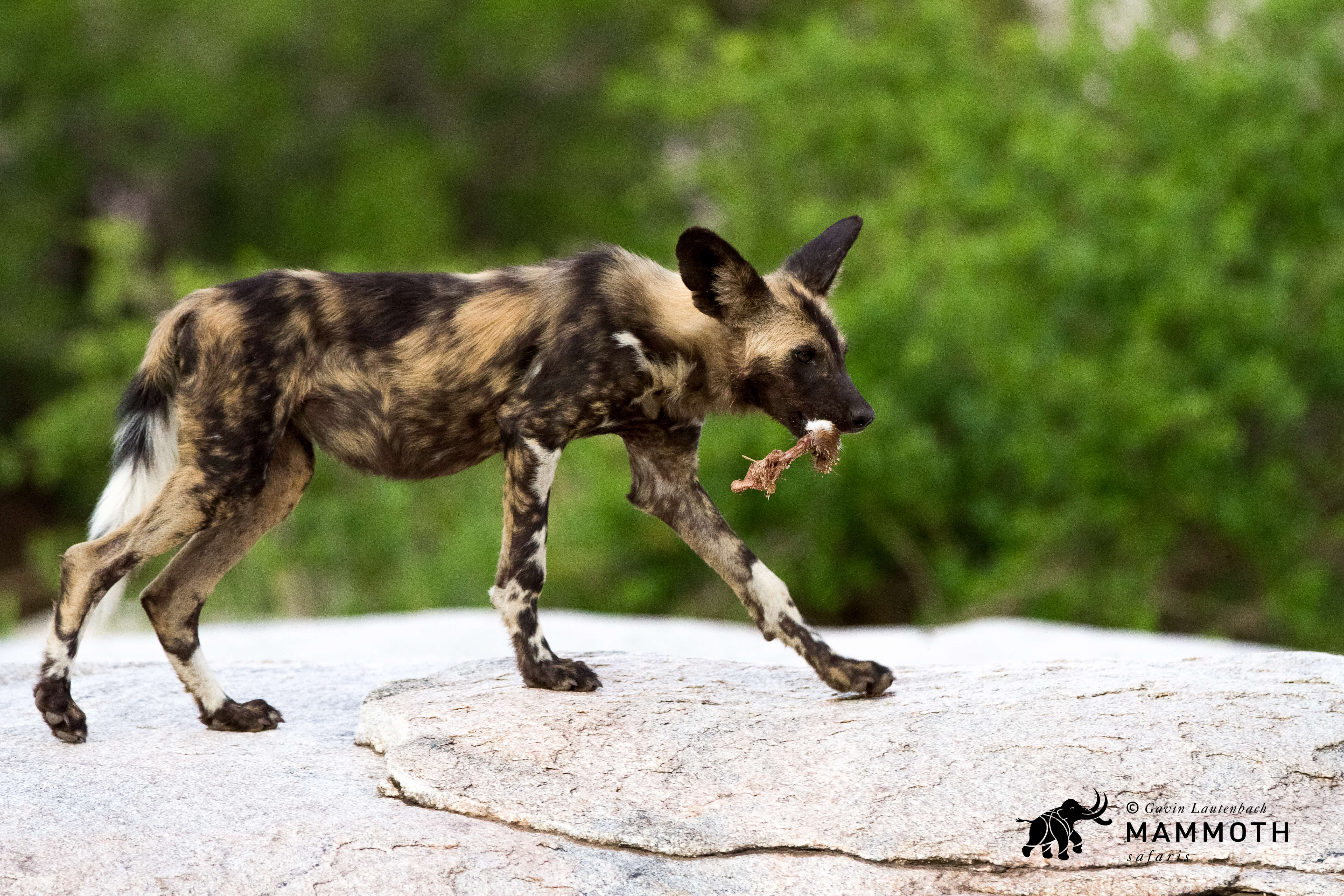
No need to throw this dog a bone – the African Wild Dog is an incredibly successful hunter.
African Wild Dogs are incredibly efficient and successful hunters. The success rates of these predators have been recorded as being anything from 60% to close to 80% of hunting attempts yielding a meal. Their success can be attributed to a number of factors from prey density to strategic techniques of military precision. They also possess remarkable endurance and will often simply exhaust prey with relentless chasing. The large pack numbers (these vary from area to area) also create confusion amongst the prey species and in their flight, prey can often be outsmarted by this “strength in numbers” technique.
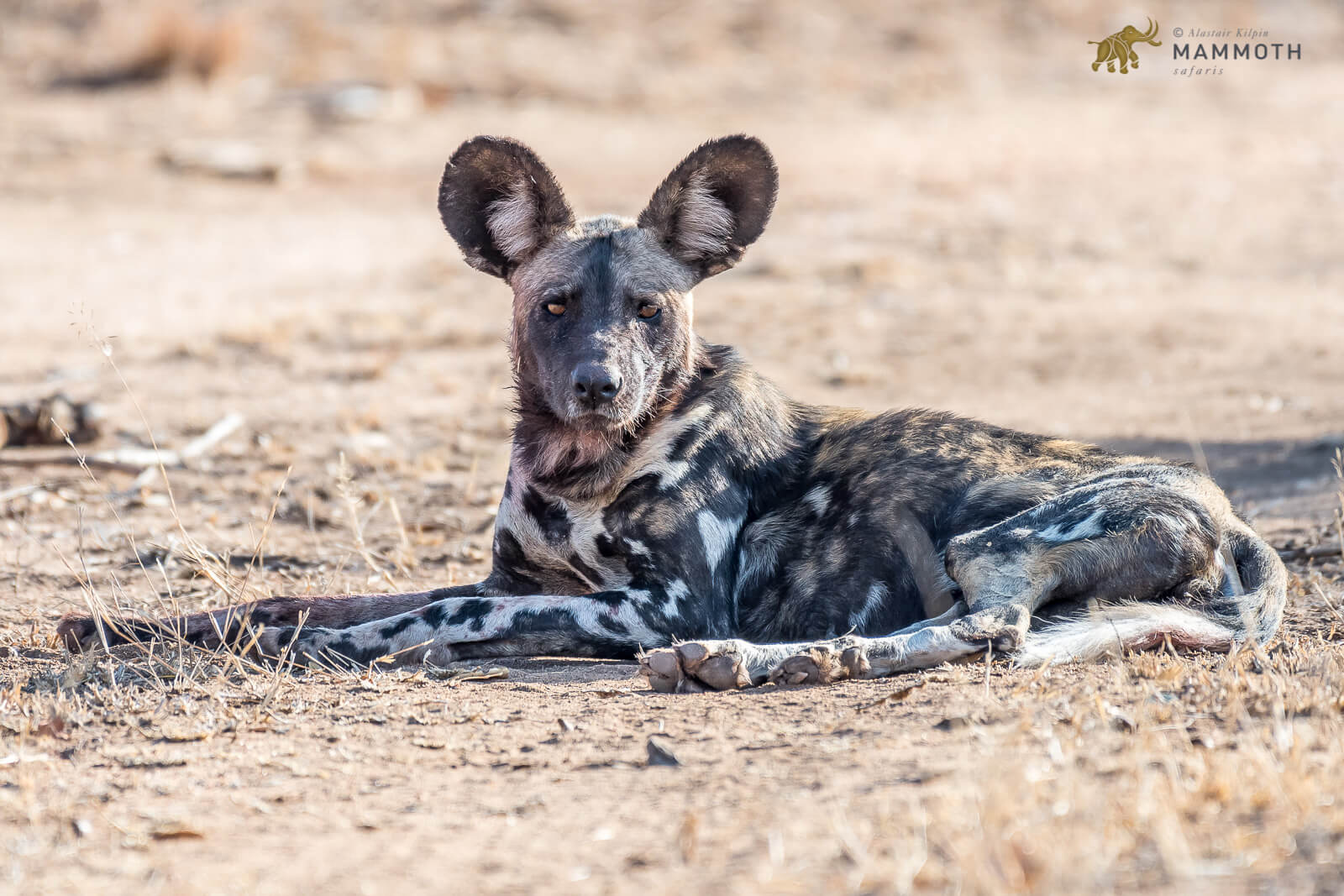
Let’s make a day of it…
Together with the Cheetah, the African Wild Dog is primarily a diurnal hunter as it lacks the same nocturnal vision abilities of predators such as the Lion, Leopard and Hyena to allow it to successfully hunt at night. Some packs would be considered to be crepuscular in their hunting activity. Now there is a great word for your next game of scrabble – crepuscular animals are animals that are mostly active during periods of twilight (dawn and dusk). Being opportunistic hunters though, one might see activity from these dogs at any time of the day, but as with any sensible dog, the heat of the day usually sees them lounging in the shade.

Home sweet home…
The African Wild Dog will create a den in which to give birth to and raise the pups in. This home is typically dug into large termite mounds, often making use of abandoned warthog burrows, or further excavating holes dug by aardvarks. Once a den is established the pack will base themselves around that site until the pups are old enough to move with the adults, typically for at least 3 months. The discovery of a den is striking safari gold, and a number of reserve areas are fortunate enough to have fairly consistent and predictable (as much as anything is consistent and predictable in the African wilderness) den site offerings. Predator pressure will see the dogs move home very swiftly, and Monday’s home can quickly become Tuesday’s hole in the ground.
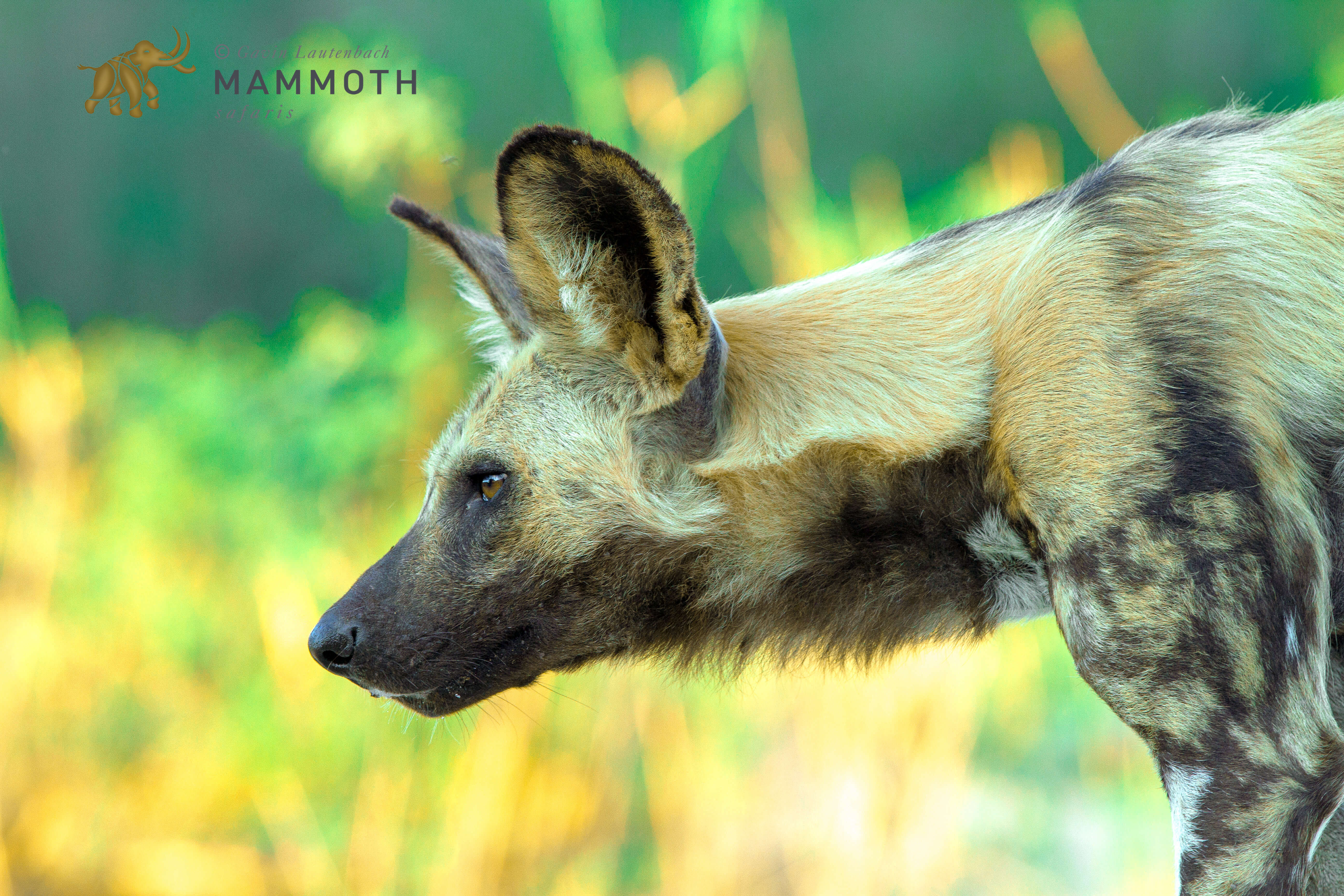
I’m all ears…
There are few sights more impressive than a pack of African Wild Dogs on the hunt. Whilst the individual dog’s senses are critical to identifying the prey and initiating the hunt, hunting remains a collective enterprise.
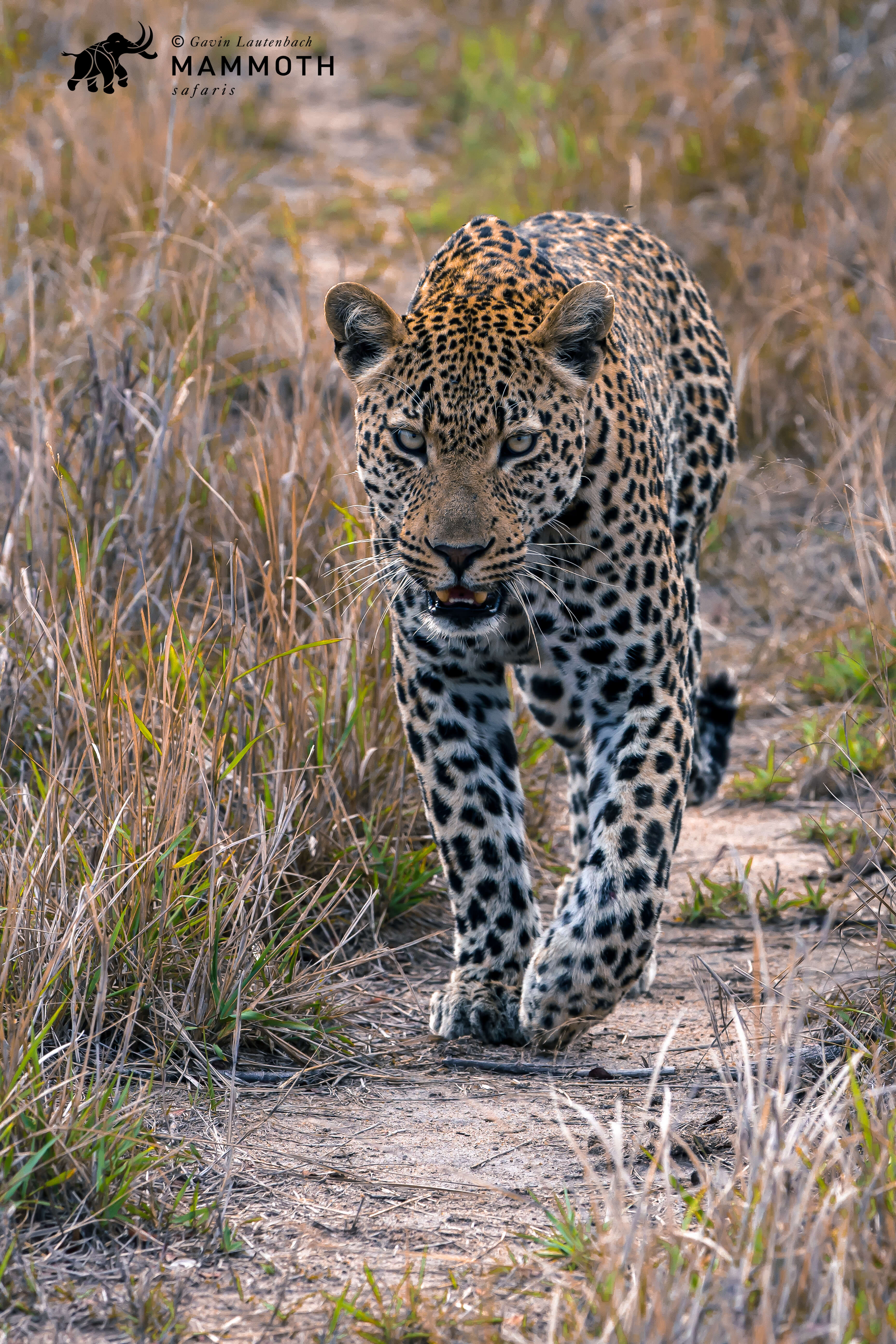
Here is a cat that takes no nonsense from a dog…
The impressive bulk of the African Leopard (Panthera pardus) represents a real risk to the Wild Dog pups. Leopard, Lion and Hyena will all kill the dogs when given the chance – a typical predator’s response to managing competition and ensuring a better chance at accessing an often limited food resource. Despite pack sizes, African Wild Dogs will typically avoid conflict where possible and increased predator pressure will often see dogs abandon den sites and quickly leave areas to avoid the risk. This is something to bare in mind when researching where your best bet is to see the wild dogs. Reserves with particularly large lion populations for example, will often see dogs more reluctant to den in those areas. Predator concentrations are transient though, and as with much of what happens in the African wilderness not a hugely predictable happenstance.
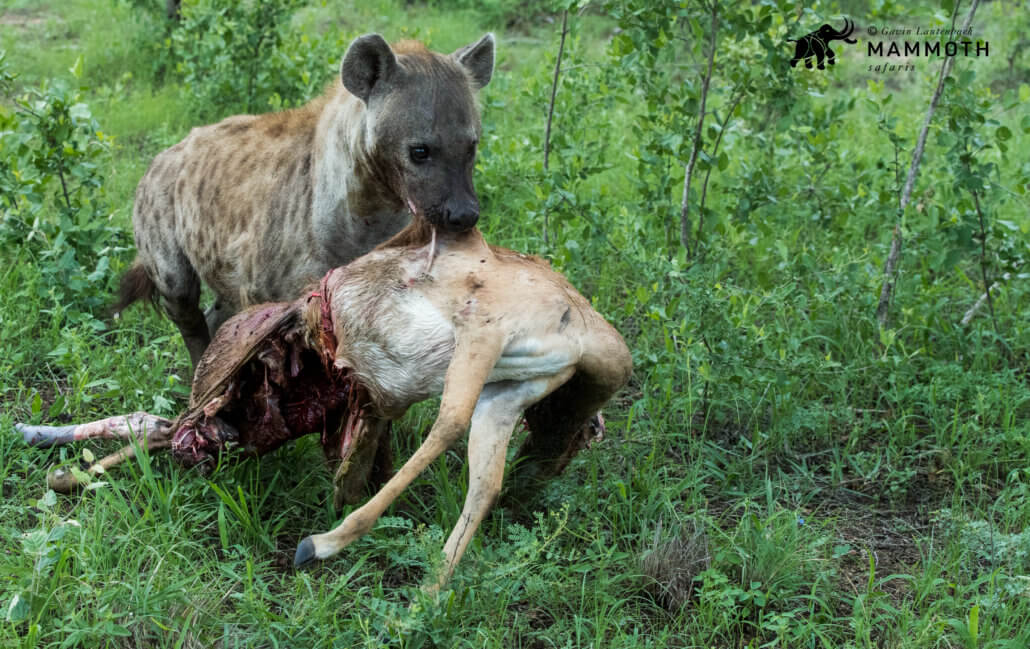
The Spotted Hyena – always ready for a take-away meal…
It is not often that a Spotted Hyena will be presented with a virtually intact carcass like this Impala stolen off a Leopard, as African Wild Dogs do tend to “decimate” their prey in very quick time. That said though, the much bigger, stronger and more powerful Hyena do represent a threat to African Wild Dogs. They will not only steal food off the dogs when given the opportunity, but will also seek out and kill the pups. Much like the large prides of Lion putting pressure on the dogs, large clans of Hyena in a particular area will also “encourage” the dogs to set up shop elsewhere. When all the 5 “big” predators are in a particular area, Lion and Hyena will typically vie for top spot on the predator hierarchy (Lion pride vs Hyena clan size determining who takes gold) with the Leopard usually gracing third spot on this list. The Wild Dog will then follow in fourth, with the Cheetah – risking none of its speed and grace in any injury-causing conflict – languishing at the bottom.
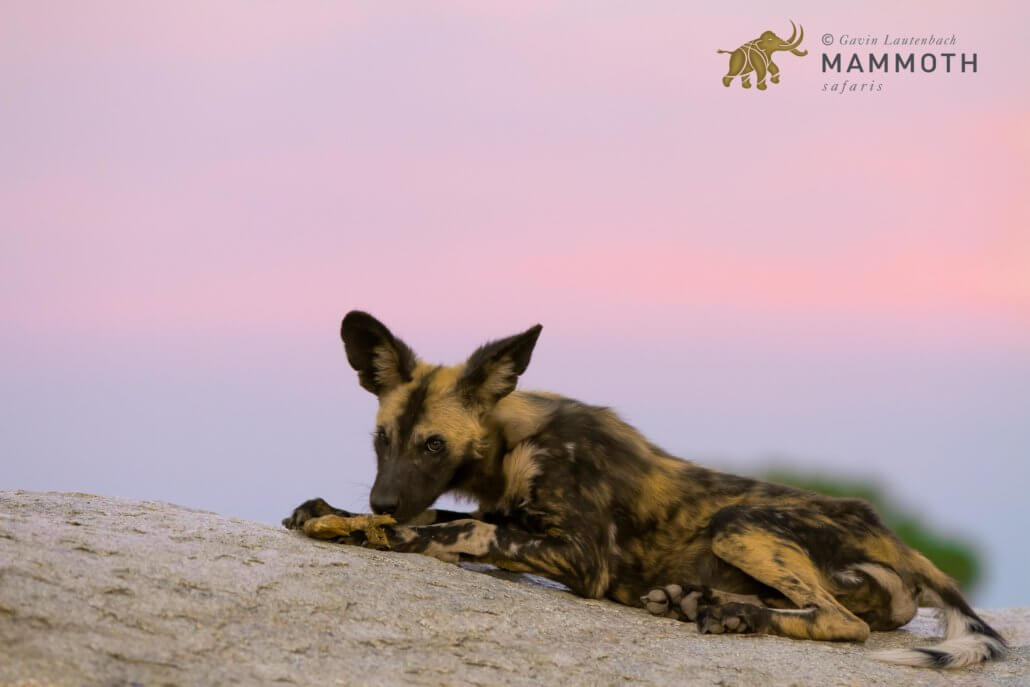
Our Top 5 African Wild Dog viewing areas…
** spoiler alert ** Wild Africa is wild and in this wilderness things change very quickly. That said, the areas listed below are areas where we have been fortunate enough to have what could be described as consistently good dog viewing and / or have a wonderful reputation for decent sightings.
- Ngala Private Game Reserve – Greater Kruger National Park, South Africa
- Madikwe Safari Lodge – South Africa
- Vumbura Plains – Okavango Delta, Botswana
- Sasaab – Samburu National Park, Kenya
- Kwihala Camp – Ruaha National Park, Tanzania
So you want to see a wild dog…
African Wild Dog populations can be found in Southern Africa, Tanzania and East Africa, but be well advised that a sighting of these “Painted Wolves” is more a rarity than the norm. We have listed 5 reserve areas above and a wonderful camp option in these areas that have a good track record for dog sightings. When the dogs have established a den and are returning to that particular spot, your chances of a sighting is most certainly increased. Denning in Southern Africa tends to happen from June and can run through to September, but is again a variable that is not hugely predictable.
The population numbers of African Wild Dogs have been declining for a number of reasons including habitat loss and “habitat fragmentation”. The fragmentation of habitat sees the once large territories of the dogs split into many smaller pieces. African Wild Dogs require large areas in which to roam and hunt and are very sensitive to disruptions of their natural surroundings. The main cause for habitat fragmentation is human activity. Infectious diseases and road accidents add to the plight of the painted wolves.
How to give yourself the best chance of spending sometime with one of the rarest predators on the African continent…
Contact us now to begin your journey to viewing this amazing predator. Obviously nothing is guaranteed on safari, but with proper planning backed by our years of experience, we can ensure that you are very well placed to see the African Wild Dog in the wilds of Africa. Please contact a member of our sales team by sending an email to info@mammothsafaris.com and be sure to share as much detail as to your ideal safari with us. Also keep visiting www.mammothsafaris.com for more destinations and journey ideas.

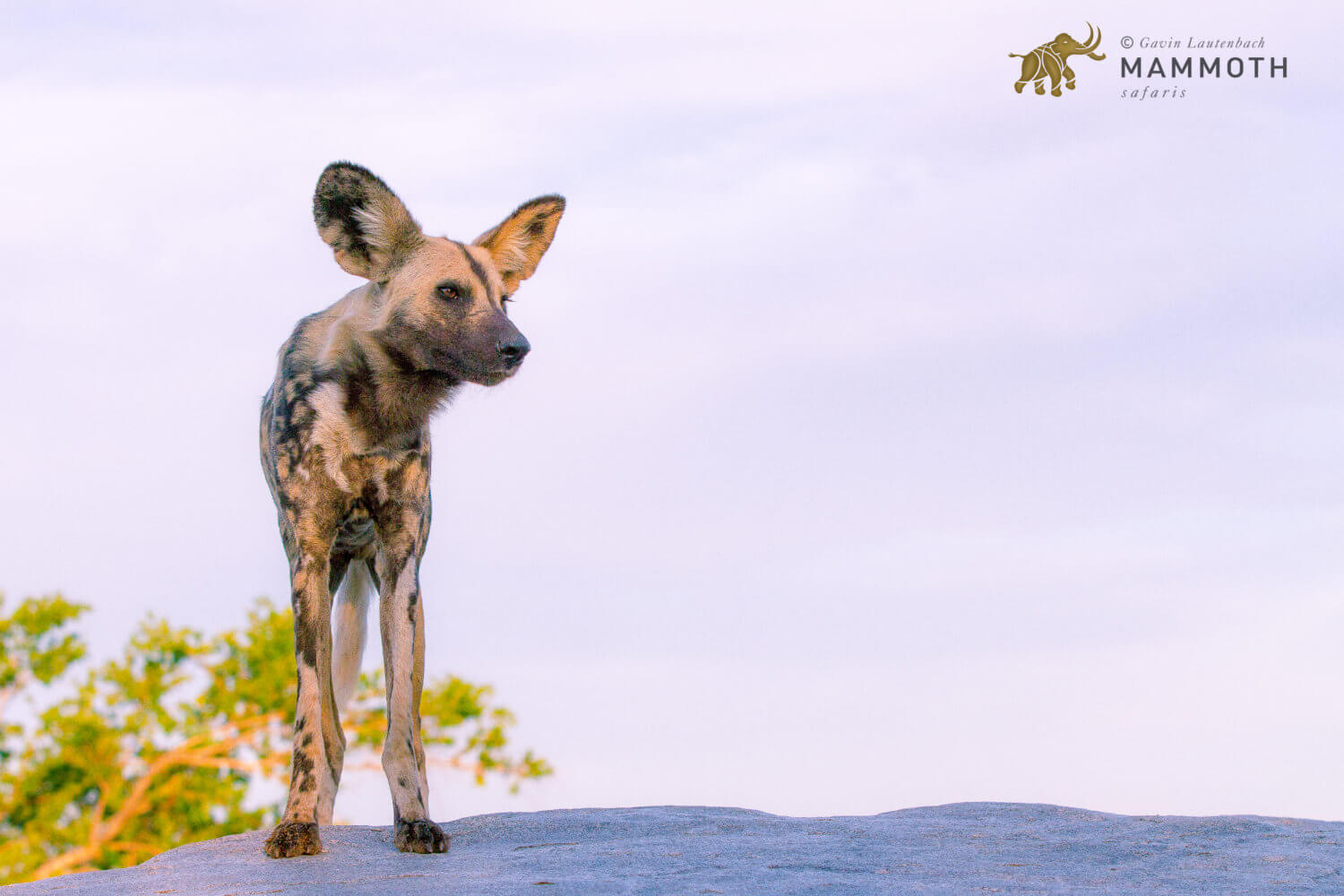


Leave a Reply
Want to join the discussion?Feel free to contribute!